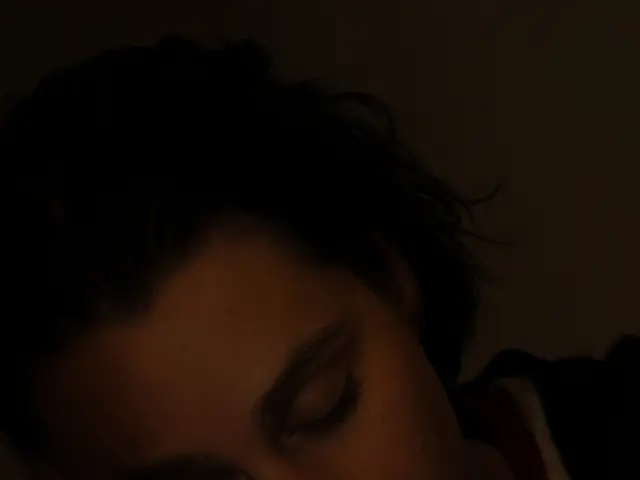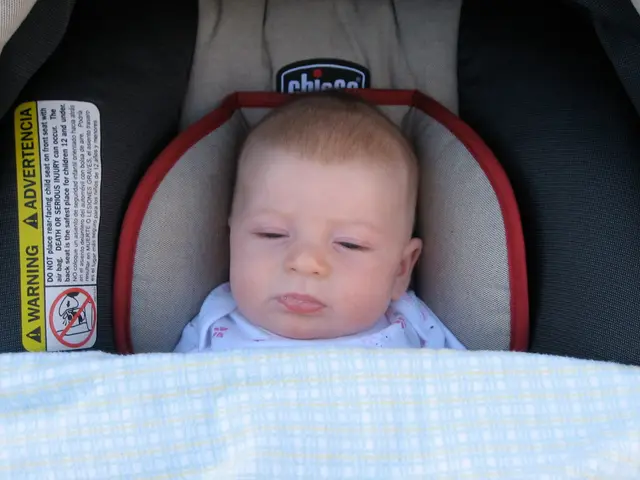Gaining Insight on Dyssomnia: Symptoms, Triggers, and Remedies
You know, sleep is crucial for our health, and yet, millions around the world grapple with chronic sleep disorders. One group of these problems belongs to the classification of dyssomnia, contrasting parasomnia (which causes disturbances during sleep). Let's dive into the world of dyssomnia, exploring causes, types, and management strategies.
Sleep Disorders Categories
Sleep disorders are divided into two primary categories: dyssomnia and parasomnia.
Dyssomnia sleep disorder disrupts your ability to fall asleep or stay asleep comfortably.
Parasomnia sleep disorder, on the other hand, causes bizarre or disruptive activities during sleep.
What is Dyssomnia?
Dyssomnia refers to a collection of sleep disorders affecting the quality and duration of sleep.
Dyssomnia Causes
Many elements contribute to the development of dyssomnia, influencing sleep patterns:
- Poor sleep hygiene: Irregular sleep schedules, caffeine consumption, and stimulating activities before bedtime can lead to dyssomnia.
- Environmental factors such as noise and light pollution can also cause a disruption in sleep.
Types of Dyssomnia
Dyssomnia is primarily classified into three categories:
Intrinsic Dyssomnias
These disorders arise from internal dysfunctions within the body or brain, including medical conditions:
- Obstructive sleep apnea
- Narcolepsy
- Insomnia
- Restless Legs Syndrome (RLS)
- Periodic Limb Movement Disorder (PLMD)
- Hypersomnia
Extrinsic Dyssomnias
These are caused by external factors or habits:
- Nocturnal eating syndrome
- Poor sleep hygiene practices
Circadian Rhythm Dyssomnias
These disorders are caused by misaligned or irregular circadian rhythms:
- Shift work sleep disorder
- Jet lag
- Delayed sleep phase syndrome
- Advanced sleep phase syndrome
- Non-24-hour sleep-wake disorder
Symptoms of Dyssomnia
- Excessive daytime sleepiness (hypersomnia)
- Trouble falling asleep, staying asleep, or waking up in the middle of the night
- Abnormal breathing patterns (e.g., snoring, gasping)
- Feeling restless or tingly sensations in the arms or legs
- Sleep disturbances or unusual activities during sleep (e.g., sleepwalking, bed-wetting)
Diagnosis, Differences, and Treatment
To diagnose the specific type of dyssomnia, healthcare providers evaluate sleep history, sleep habits, mental health, and physical health to rule out any underlying issues.
The treatment for dyssomnia depends on the causative sleep disorder. Possible treatments include psychological therapies such as Cognitive Behavioral Therapy (CBT) or medication, or in some cases, a combination of both.
Managing Dyssomnia Symptoms
Below are tips to manage and reduce dyssomnia symptoms:
- Establish a consistent sleep schedule
- Create a sleep-conducive environment
- Implement a relaxing bedtime routine
- Avoid eating too heavily or consuming caffeine before bedtime
- Keep stimulating activities for the daytime
Conclusion
Dyssomnia refers to a broad collection of sleep disorders that impact the quality and quantity of sleep. These disorders arise from poor sleep hygiene, external factors, or underlying medical conditions. With the right combination of self-care practices, professional help, and treatments, it's possible to achieve restful sleep and improve overall health.
- Sleep disorders are divided into two primary categories: dyssomnia and parasomnia, with dyssomnia disrupting your ability to fall asleep or stay asleep comfortably.
- Dyssomnia is a collection of sleep disorders affecting the quality and duration of sleep. Poor sleep hygiene, irregular sleep schedules, caffeine consumption, and stimulating activities before bedtime can lead to dyssomnia.
- Intrinsic Dyssomnias are disorders that arise from internal dysfunctions within the body or brain, including medical conditions such as obstructive sleep apnea, narcolepsy, insomnia, restless legs syndrome (RLS), periodic limb movement disorder (PLMD), and hypersomnia.
- Symptoms of dyssomnia include excessive daytime sleepiness, trouble falling asleep, staying asleep, or waking up in the middle of the night, abnormal breathing patterns, feeling restless or tingly sensations in the arms or legs, and sleep disturbances or unusual activities during sleep like sleepwalking or bed-wetting.
- To diagnose the specific type of dyssomnia, healthcare providers evaluate sleep history, sleep habits, mental health, and physical health to rule out any underlying issues.
- The treatment for dyssomnia depends on the causative sleep disorder and may include various therapies and treatments such as cognitive behavioral therapy (CBT) or medication, or a combination of both.
- To manage and reduce dyssomnia symptoms, establish a consistent sleep schedule, create a sleep-conducive environment, implement a relaxing bedtime routine, avoid eating too heavily or consuming caffeine before bedtime, and keep stimulating activities for the daytime.
- With the right combination of self-care practices, professional help, and treatments, it's possible to achieve restful sleep and improve overall health. Science plays a significant role in understanding the causes, symptoms, diagnoses, and treatments of these chronic sleep disorders and mental-health conditions, along with health-and-wellness and therapies-and-treatments essential to better sleep.








